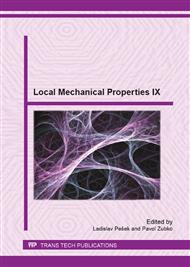p.3
p.11
p.15
p.19
p.23
p.27
p.31
p.35
Development of Plastic Zones during the Thermal Cycle of Welding
Abstract:
The high temperatures induced during the welding process cause transient thermal stresses and non-continuous plastic strains around the weld. Uneven heating and cooling processes together with these plastic strains result in residual (welding) stresses, [1]. This paper deals with the development of plastic zones, related to welding stresses and their effects on the bearing capacity from a Civil-engineering perspective.
Info:
Periodical:
Pages:
11-14
Citation:
Online since:
September 2013
Authors:
Price:
Сopyright:
© 2014 Trans Tech Publications Ltd. All Rights Reserved
Share:
Citation:


